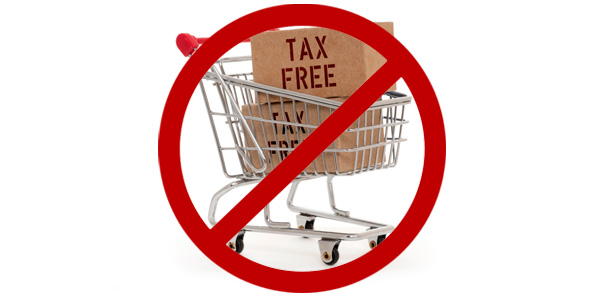Sales Tax Compliance - The Ticking Time Bomb
Shopping online has always had one big advantage over shopping in a physical store - no sales tax. If the online store you are buying from has no physical presence (nexus) in the state where you live, the seller is under no legal obligation to charge Sales Tax on the order. If you are making large purchases online, this can result in hundreds, even thousands of dollars in savings. But, as you can imagine, with online sales accounting for more than $250billion in revenue last year in the U.S. alone, this online tax-free joyride is costing the States, Counties and Cities millions of dollars in lost revenue each year, and unsurprisingly, they are making aggressive moves to put an end to it. Today, online merchants must make sure their operations are Sales & Use Tax compliant. Any merchants that are not, are leaving themselves wide open to an audit, and the result of that audit will be stiff fees and penalties when it is proven that sales tax has not been calculated or collected properly.
This has serious implications not only for any merchant who operates an online store, but for companies like us, who provide e-commerce solutions, we are faced with a huge task to reprogram the way our software calculates sales tax. This is a problem the entire e-commerce software industry is facing. In the open-source arena, shopping carts like Magento, OSCommerce, ZenCart etc simply let the merchant enter the State Sales Tax value that applied in their area. This was used to calculate sales tax and apply it to any orders shipped within the same state. This method is hugely inaccurate, and not commpliant with tax legislation in most states. Sales Tax legislation dictates that tax must be calculated based on the city the goods are shipped to, not where the goods are shipped from. To make matters even more difficult, sales tax boundaries cross zip code boundaries, so calculating the tax rate based on zip is no good. Applying a blanket State Sales Tax rate is problematic. The reason? In States like California, the total sales tax rate is made up of State, County and Local District rates, and is different for each district. When you start to realize that there are nearly 2,000 districts in California alone, that all having varying levels of tax, you begin to see the headache that destination-based sales tax creates for any online store software, and the merchant who operates that store.
The tax collected needs to be itemized and declared on the end of year tax return so the correct monies can be distributed to the appropriate cities, districts, counties and state coffers. If the sales tax collected is not itemized out, which it currently is not by most online merchants, then it is impossible to do this. This is why, at city and district level, there is a huge effort to bring merchants into compliance and throw the book at anyone who is not.
The other side to this whole new Sales Tax coin is Nexus Based Tax Collection. Simply put, if you have a presence in another state (s), you are responsible for collecting Sales Tax in the State(s) you are sending the goods to.
What does Nexus mean? Nexus, also known as sufficient physical presence, is the determining factor of whether an out-of-state business selling products into a state is liable for collecting the tax on sales in the state. Nexus is created if your company maintains a temporary or permanent presence of people (employees, service people or independent sales/service agents) or property (inventory, offices, warehouses). The temporary presence is created through traveling people visiting states to call on customers or prospects, trade show attendance, or consigned inventory in warehouses. If you have established nexus in a State (or States), you are required to register as a retailer with each state before collecting sales tax for that state.
This all sounds like a huge headache, and you aren't wrong. Where does this leave us? E-commerce software can no longer just charge a blanket State Sales Tax rate based on the location of the merchant. It now has to be calculated based on the destination city. Not only that, but the system has to know where you may have Nexus and charge the appropriate Sales Tax if you ship an order there. As we haver seen above, there are nearly 2,000 tax districts in the State of California alone. This equates to tens of thousands nationally. What makes matters worse is that these thousands of tax rates fluctuate and change all the time. Even if we could build this data into our system, how would we keep it up to date so it is accurate?
By partnering with one of the nation's leading sales tax calculation services, we are one of the first providers in the open source market to tackle this issue and introduce real-time Nexus and Destination Sales and Use Tax calculations to our software. This will ensure that any MyCommerce client, new or existing, will be certified as Sales & Use Tax Compliant. Please check this space for an official announcement and more details soon.


